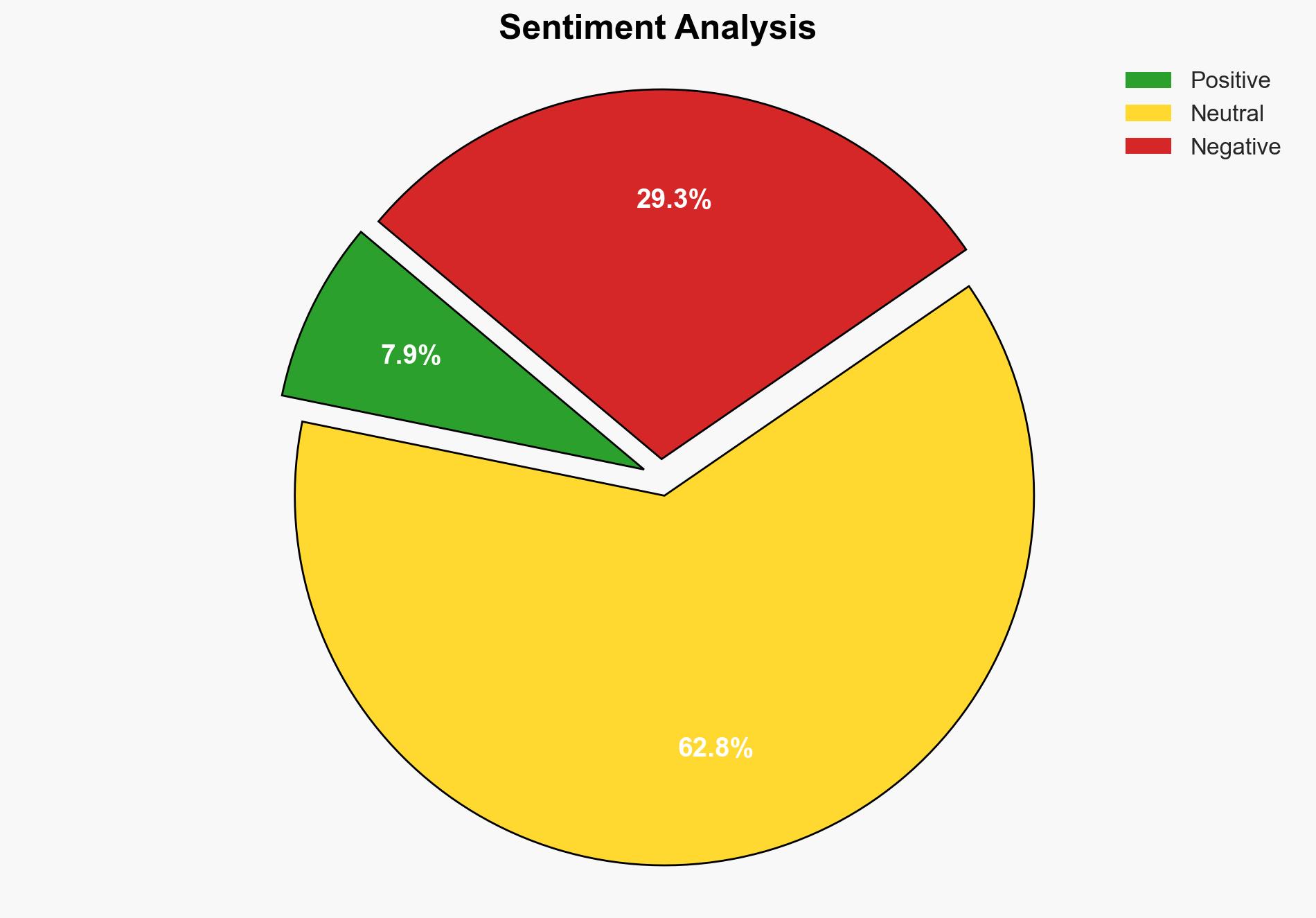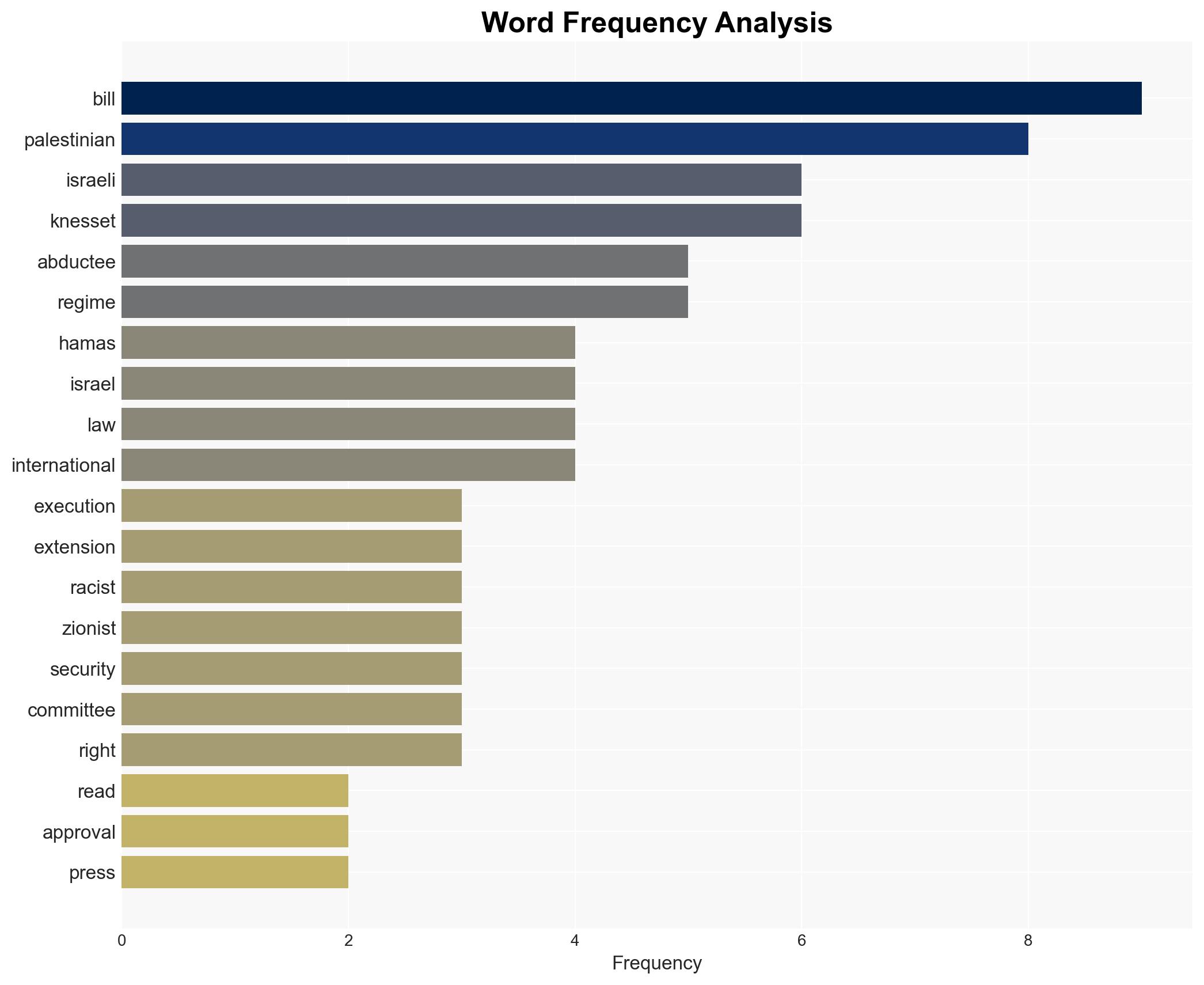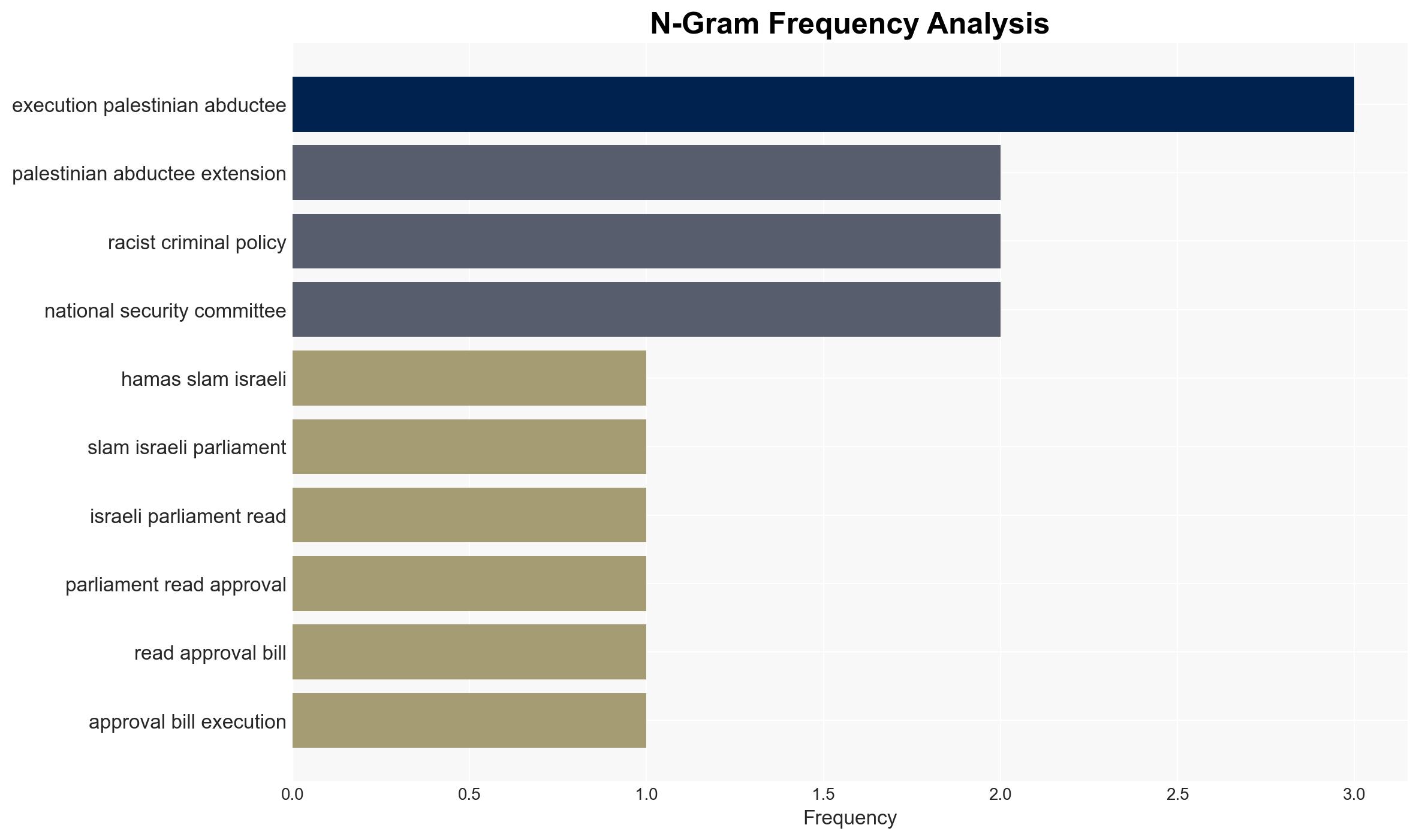Hamas slams Israeli parliament’s first reading approval of bill for execution of Palestinian abductees – Globalsecurity.org
Published on: 2025-11-12
AI-powered OSINT brief from verified open sources. Automated NLP signal extraction with human verification. See our Methodology and Why WorldWideWatchers.
Intelligence Report: Hamas slams Israeli parliament’s first reading approval of bill for execution of Palestinian abductees – Globalsecurity.org
1. BLUF (Bottom Line Up Front)
With a moderate confidence level, the most supported hypothesis is that the Israeli bill is primarily a domestic political maneuver to consolidate far-right support rather than an immediate operational policy shift. Recommended action includes diplomatic engagement to de-escalate tensions and monitoring for potential retaliatory actions from Palestinian factions.
2. Competing Hypotheses
Hypothesis 1: The bill is a strategic move by the Israeli government to strengthen its domestic political position by appealing to far-right constituents, rather than a genuine intent to implement executions.
Hypothesis 2: The bill represents a genuine policy shift towards harsher punitive measures against Palestinian detainees, reflecting an escalation in Israeli-Palestinian tensions.
Hypothesis 1 is more likely due to the timing of the bill’s introduction, coinciding with recent political gains by far-right parties in Israel. The lack of immediate operational changes and international backlash also supports this interpretation.
3. Key Assumptions and Red Flags
Assumptions include the belief that Israeli political dynamics are the primary drivers of the bill and that international pressure could deter its implementation. Red flags include potential misinformation or propaganda from both Israeli and Palestinian sources, and the possibility of the bill being used as leverage in broader geopolitical negotiations.
4. Implications and Strategic Risks
The passage of the bill could exacerbate Israeli-Palestinian tensions, potentially leading to increased violence in the region. It may also strain Israel’s international relations, particularly with Western allies. Cyber and informational threats could emerge as both sides seek to influence public opinion and international response.
5. Recommendations and Outlook
- Engage in diplomatic dialogue with Israeli and Palestinian leaders to de-escalate tensions and explore alternative conflict resolution mechanisms.
- Monitor for retaliatory actions from Palestinian factions and prepare for potential escalation scenarios.
- Best Scenario: The bill is not enacted, and diplomatic efforts lead to renewed peace talks.
- Worst Scenario: The bill is enacted, leading to widespread violence and international condemnation.
- Most-likely Scenario: The bill remains a political tool without immediate implementation, but tensions remain high.
6. Key Individuals and Entities
Itamar Ben-Gvir (Israeli far-right minister), Hamas (Palestinian resistance movement), Israeli Knesset (Parliament).
7. Thematic Tags
National Security Threats
Structured Analytic Techniques Applied
- Cognitive Bias Stress Test: Expose and correct potential biases in assessments through red-teaming and structured challenge.
- Bayesian Scenario Modeling: Use probabilistic forecasting for conflict trajectories or escalation likelihood.
- Network Influence Mapping: Map relationships between state and non-state actors for impact estimation.
Explore more:
National Security Threats Briefs ·
Daily Summary ·
Methodology





